#400-700 nanometers
Text
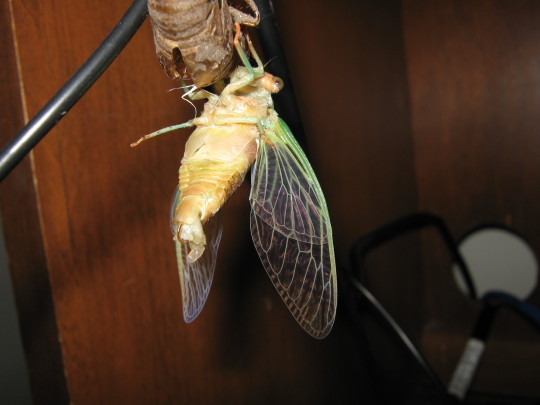
That other cicada post made me so nostalgic, I dug up an ancient photo archive! This cicada emerged in the summer of '09 in my dorm room. You can see the four wings shimmering in diaphanous color :)
#bug#cicada#the green color is pigment#but the rainbow color is because the cicada's wing is as thin as visible light waves are long :D#400-700 nanometers#it's called thin film interference and it's my favorite color#also#cw cicada penis
67 notes
·
View notes
Text
Near as I can figure, a laser’s effective range varies linearly with its frequency (or inversely with the wavelength). So if your Luke Campbell heavy laser has a range of 350 meters in 1064 nanometer infrared (the wavelength of a neodymium-doped yttrium aluminum garnet—Nd:YAG—laser), it will have a range of 700 meters in frequency-doubled 532 nanometer green. And a range of 1050 meters (!) in frequency-tripled 335 nanometer UV.
You might say atmosphere is opaque to UV, but nope, that’s only UVC (100–280 nanometers). UVB (280–315 nanometers) will stick around till it hits ozone, and UVA (315–400 nanometers) is basically visible light, as far as air is concerned. (It’s UVA that marsupials and diapsids can see and placental mammals can’t. No real point in their being able to see a wavelength that air is opaque to, now is there? There’s also a reason sunscreen only rates for UVA and UVB; UVC is stopped on the other side of the entire sky.)
#i think there are issues with wear on the components and efficiency of getting the light coherent for uv lasers#but in a scifi setting we can say the tech has advanced to the point where that issue is overcome#just like we say the laser weapons are like 80% efficient#rather than 20–50% like in current lasers outside laboratory conditions#worldbuilding#world building#scifi worldbuilding#scifi writing#i write military science fiction
3 notes
·
View notes
Text
dang girl you between 400 to 700 nanometers? cause you visibly on the spectrum
3 notes
·
View notes
Text
Indoor Grow Light Spectrum & Color Temperature
Indoor gardening has experienced a surge in popularity in recent years, as it allows individuals to cultivate plants and crops throughout the year, regardless of external weather conditions. A crucial factor for successful indoor gardening is providing plants with the right amount and quality of light. This is where understanding the indoor grow light spectrum and color temperature becomes essential.
The Importance of Light Spectrum in Indoor Gardening
Light spectrum refers to the range of wavelengths of light that plants utilize for photosynthesis. Each wavelength within the spectrum has different effects on plant growth and development. Gaining an understanding of the significance of each spectrum range can help indoor gardeners optimize their plant growth.
Blue Light Spectrum
Blue light, which typically ranges from 400 to 500 nanometers, plays a critical role in the vegetative growth of plants. It stimulates leaf growth and aids in the development of a robust root system. Additionally, blue light contributes to the overall compactness and health of plants. This spectrum range is particularly important for leafy greens, herbs, and seedlings.
Expanding on the benefits of blue light, it increases chlorophyll production, which is essential for photosynthesis. Moreover, blue light helps regulate the plant’s circadian rhythm, influencing its growth patterns and overall development. By providing an adequate amount of blue light, indoor gardeners can ensure the healthy growth of their plants.
Red Light Spectrum
Red light, ranging from 600 to 700 nanometers, is crucial during the flowering and fruiting stages of plant growth. It plays a significant role in stimulating the production of flowers and fruits. Red light also promotes overall plant growth, leading to healthier and more robust plants. This spectrum range is particularly important for flowering plants, as well as crops like tomatoes and peppers.
Expanding on the benefits of red light, it triggers the flowering response in plants, initiating the process of reproduction. Additionally, red light encourages the synthesis of essential plant hormones, such as auxins and gibberellins, which regulate various growth processes. By providing an adequate amount of red light, indoor gardeners can ensure the successful flowering and fruiting of their plants.
Full Spectrum Lighting
While blue and red light spectrums are vital for plant growth, providing a balanced combination of both is essential. Full spectrum lighting encompasses wavelengths from both ends of the spectrum, ensuring that plants receive all the necessary light for their various growth stages. By mimicking natural sunlight, full spectrum lighting promotes optimal photosynthesis and overall plant health.
Expanding on the benefits of full spectrum lighting, it provides a well-rounded light source that covers the entire range of wavelengths needed for plant growth. This includes not only blue and red light, but also other spectrums such as green and yellow. Full spectrum lighting ensures that plants receive a comprehensive light spectrum, similar to what they would experience outdoors. This promotes healthy growth, strong root development, and enhanced photosynthesis.
Understanding Color Temperature in Indoor Grow Lights
In addition to the light spectrum, color temperature is another crucial factor to consider when selecting indoor grow lights. Color temperature is measured in Kelvin (K) and determines the color appearance of light. It has a significant impact on plant growth and can greatly influence the overall success of indoor gardening.
Warm White Light (2700-3000K)
Warm white light, ranging from 2700 to 3000K, provides a soft and cozy appearance similar to traditional incandescent lighting. This color temperature is suitable for the flowering and fruiting stages of plant growth. It enhances photosynthesis and promotes the development of flowers and fruits. Warm white light is often used in combination with red light to achieve optimal re
sults.
Expanding on the benefits of warm white light, it creates a comfortable and inviting environment for plants. It stimulates the production of essential pigments, such as anthocyanins, which contribute to the vibrant colors of flowers and fruits. Additionally, warm white light aids in the absorption of essential nutrients, promoting healthy growth and bountiful yields.
Cool White Light (4000-4500K)
Cool white light, ranging from 4000 to 4500K, provides a bright white appearance that closely resembles natural daylight. This color temperature is ideal for the vegetative growth stage of plants. It stimulates leaf and stem development, contributing to overall plant health and vigor. Cool white light is commonly used in combination with blue light to achieve optimal results.
Expanding on the benefits of cool white light, it provides a bright and energetic environment for plants. This stimulates photosynthesis and chlorophyll production, which are essential for healthy leaf growth. Additionally, cool white light promotes sturdy stem development, enhancing the plant’s ability to support the weight of leaves and flowers.
Daylight White Light (5000-6500K)
Daylight white light, ranging from 5000 to 6500K, provides a crisp and vibrant appearance similar to midday sunlight. This color temperature is suitable for all stages of plant growth, from seedlings to flowering. It promotes overall plant growth, enhances chlorophyll production, and increases the yield of certain crops. Daylight white light is a popular choice for a wide range of indoor plants.
Expanding on the benefits of daylight white light, it closely resembles natural sunlight, providing plants with the ideal lighting conditions for their growth. This color temperature stimulates photosynthesis and the production of essential pigments, resulting in healthy and vibrant foliage. Additionally, daylight white light helps regulate plant hormones, promoting balanced growth and development.
Choosing the Right Indoor Grow Lights
When selecting indoor grow lights, it is crucial to consider both the light spectrum and color temperature to ensure optimal plant growth. Some grow lights are specifically designed to provide a full spectrum of light, while others may focus on specific spectrums or color temperatures. Here are a few tips to consider when choosing the right indoor grow lights:
Determine the specific needs of your plants: Different plants have varying light requirements. Research the light preferences of your chosen plants to select the most suitable lighting options.
Opt for adjustable grow lights: Adjustable grow lights allow you to customize the light spectrum and color temperature according to the specific growth stage of your plants. This flexibility ensures that your plants receive the ideal lighting conditions throughout their lifecycle.
Consider energy efficiency: Look for grow lights that are energy-efficient to minimize electricity consumption and reduce costs. LED grow lights are a popular choice due to their low energy consumption and long lifespan.
Seek the advice of experts: If you are unsure about the lighting requirements of your plants or need guidance in selecting the right indoor grow lights, consult with gardening experts or horticulturists.
Regularly monitor and adjust lighting conditions: As plants grow and their lighting requirements change, regularly assess and adjust the lighting conditions accordingly. This ensures optimal growth and prevents any issues related to insufficient or excessive light exposure.
In conclusion, understanding the indoor grow light spectrum and color temperature is essential for successful indoor gardening. By providing the right combination of blue and red light spectrums, along with the appropriate color temperature, indoor gardeners can optimize plant growth, promote flowering and fruiting, and achieve healthier and more abundant crops. Choose your indoor grow lights wisely and enjoy the benefits of year-roun
d gardening!
FAQ: Indoor Grow Light Spectrum & Color Temperature
Q: What is the importance of light spectrum in indoor gardening?
A: Understanding the light spectrum is crucial for optimizing plant growth in indoor gardening. Different wavelengths of light have varying effects on plant development, with blue light promoting vegetative growth and red light stimulating flowering and fruiting stages.
Q: Why is blue light important in indoor gardening?
A: Blue light, ranging from 400 to 500 nanometers, is essential for the vegetative growth of plants. It promotes leaf growth, helps establish a strong root system, and contributes to overall plant compactness and health. Blue light is particularly important for leafy greens, herbs, and seedlings.
Q: What is the significance of red light in indoor gardening?
A: Red light, ranging from 600 to 700 nanometers, plays a crucial role in the flowering and fruiting stages of plant growth. It stimulates the production of flowers and fruits, encourages overall plant growth, and leads to healthier and more robust plants. Red light is particularly important for flowering plants, tomatoes, and peppers.
Q: What is full spectrum lighting and why is it important?
A: Full spectrum lighting includes wavelengths from both the blue and red light spectrum. It ensures that plants receive all the necessary light for their various growth stages. By mimicking natural sunlight, full spectrum lighting promotes optimal photosynthesis and plant health.
0 notes
Text
Visible Light
Introduction
Visible light is the portion of the electromagnetic spectrum that is visible to the human eye. It occupies a very small portion of the electromagnetic spectrum, roughly between the wavelengths of 400 and 700 nanometers.
Electromagnetic Spectrum and Visible Light
The electromagnetic spectrum is the range of all possible frequencies of electromagnetic radiation. It extends from low…
View On WordPress
0 notes
Text
How many plants can I grow with a 300w led light

For instance, one single 300W Drove light installation might be fine for one or perhaps two plants, however it may not be sufficient to cover a greater space with various plants. So try to reference any proposals from the merchant as well as the Driven maker on how much light you will require for your developing space.
A very much planned lighting framework is the most fundamental part of any indoor cultivation climate. Producers need to ensure their plants get sufficient energy to create at ideal rates without being overwhelmed. This leads us to quite possibly our most often posed inquiry: how close ought to develop lights be to plants?
We're worried there's no careful response, as in spite of the fact that developing light distance graphs are promptly accessible, the arrangement that is ideal for you will at last rely upon what kind of lighting you use and which species you are developing. Most cutting edge indoor ranchers are dumping obsolete Stowed away (focused energy release), and fluorescent T5 develop lights for Drove (light-radiating diode) lighting.
In view of that, we should investigate a few contemplations for Drove develop light level, and plunge into suggestions for how you can accomplish the most extreme result levels for your harvest utilising advanced Drove lighting frameworks.
Driven Develop Light Distance: Contemplations
Before we get everything rolling, it's critical to have an essential comprehension of how to gauge the light that arrives at your plants. These are the super specialised terms you'll run over:
Photosynthetic Dynamic Radiation (Standard) - Standard isn't an estimation; it's basically a descriptor for the sort of light expected to help photosynthesis in plants. In particular, Standard alludes to apparent light with frequencies of 400-700 nanometers (nm).
Photosynthetic Photograph Transition (PPF) - PPF is the complete result of photons in the Standard reach from the light.
Photosynthetic Photon Motion Thickness (PPFD) - PPFD estimates how much Standard that scopes and is consumed by your plants. Various areas on each covering can have different Standard readings. Thus, the solution to the inquiry 'how close ought to develop lights be to plants?' can have variable responses.
Micromoles (μmol) - Micromoles are the unit used to evaluate PPFD and are estimated per square metre each second.
Now that you knew about the terms for estimating light, we can take a gander at a portion of the essential factors that influence develop light distances:
Driven versus Conventional Lights - Various sorts shift in the intensity energy they produce and the light ranges they offer, meaning the ideal separation from the shade is alterable.
Wattage - High wattage lights commonly should be set further away from plant shelters to keep away from harm, while lower wattage lights can be drawn nearer.
Plant Stage - The best lighting arrangements assess plant imperativeness all through the different transformative phases, so this should be considered to develop light distance. Seedlings and blooming plants will have different ideal vicinities, for instance.
We'll jump into every one of these contemplations in more profundity in the accompanying segments.
How are Driven Lights Unique?
The progression of Driven light innovation makes it more straightforward for producers to establish amazing indoor cultivating conditions and accomplish more noteworthy harvest yields on more limited developing cycles. This, thus, prompts expanded income and higher net revenues. The lift in Drove productivity and the related ascent in the notoriety of Driven arrangements boils down to a couple of key elements:
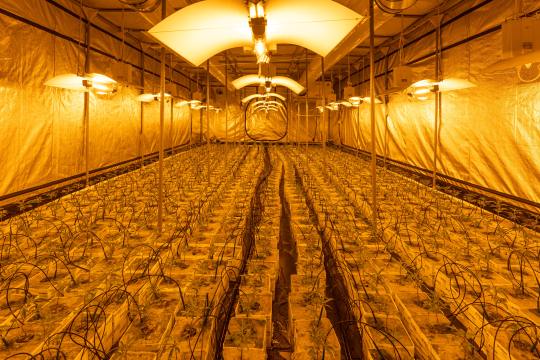
LEDs are top notch and join low upkeep costs with insignificant issues.
LEDs have longer life expectancies than their customary partners. Present day LEDs keep going for as many as 50,000 hours, compared to almost six years of constant use (the furthest down the line LEDs can endure up to two times this long).
Driven arrangements can create the whole range of noticeable light tones without the requirement for channels.
Since Drove lights discharge both red and blue frequencies, and each shade is in the middle between, they are appropriate to all phases of plant improvement.
Driven lights radiate less intensity than conventional Concealed lights, so they can be situated nearer to the shade.
Driven lights normally emanate light more than a 180-degree point, decreasing waste and the expenses related with diverting and mirroring light from 360-degree bulbs.
The expense of Driven lighting arrangements has been progressively diminishing for more than 10 years. Information from the Division of Energy information proposes LEDs costs have dropped by 90% starting around 2008.
Thus, Drove lighting is turning into the most useful and energy-productive lighting answer for indoor ranchers internationally. Different businesses are getting on as well, and it's assessed that more than 87% of all light sources will be LEDs by 2030.
How Does Wattage Influence Develop Distance?
Wattage is viewed as a huge consideration deciding how close develop lights ought to be to plants. As a rule, the higher the wattage, the further away from your plants the bulb should be. Notwithstanding, with LEDs, you can put them a lot nearer to the plant's overhang without hurting the developing system.
As an informal guideline, numerous cultivators work on the premise that:
You want 20-40 watts of force for every square foot.
Lower wattage LEDs of around 200 watts ought to sit between 12-20 crawls from the highest point of the plant.
Higher wattage LEDs of 1000 watts or more ought to sit between 36-46 crawls from the highest point of the plant.
Medium wattage bulbs ought to sit between these reaches and be continually changed in accordance with suit the light openness needs of every species as they foster through the various phases of development.
Be that as it may, these rules are not a one size fits all arrangement. For example, multi-bar or insect style lights can be hung at 12″ in any event, when they are 600w lights. Science Drove, specifically, utilises auxiliary optics that permit us to get our 600w light (Seething Kush) inside 6″ of the plants.
In any case, there's something else to it besides that. It's memorable that wattage is basically an estimation of power. While it's useful for producers to monitor wattage subtleties, it's not generally smart to pursue choices simply on electrical power while deciding how much energy your plants need to develop. The essential justification for this is that frequently, it is the variety range in a bulb or Drove chip, not the wattage, that decides the development and imperativeness of a plant's foliage and blossoms.
How about we cast our brains back to the definitions we went through before. By changing the force and length of plant openness to Standard (noticeable light with frequencies of 400-700 nm), ranchers ought to have the option to advance development. So while you can find no lack of driven develop light distance graphs on the web, there's no all inclusive response to how close your Drove lights ought to be to your plants in view of wattage alone on the grounds that you need ideal PPFD readings for each phase of each plant's turn of events.
Eventually, the wellbeing of your plants is a higher priority than the strength of the Drove bulb, so all that distances for light position can't be resolved precisely disregarding their requirements all through each phase of their life cycle.
How Truly does Establish Stage Influence Develop Distance?
As your plants create, you might have to change the Drove to develop light level to represent both the vertical development of the actual plants and their changing prerequisites for light power. Notwithstanding, a lot of cultivators leave their lights at a set level, liking to change the force to meet the PPFD needs at the covering level during each phase of development.
Plant development is commonly partitioned into three phases:
Seedling
Vegetative
Blooming
In any case, how close ought to develop lights be to plants in each stage to get the best yield?
As your plants progress between each stage, you'll have to ceaselessly lessen your drive to develop light distance. Seedlings need minimal measure of light force, so as of now, your lights should be at their most elevated over the plant shelters. On the other hand, you can likewise drop your lights and turn down their power as opposed to moving their situation. Customary lights (Stowed away or CMH) can generally simply go down to around half power. Be that as it may, Scyne Drove lights can go down to 10%.
In the vegetative stage, more extreme light is expected for ideal development. Also, when your plant's blossom, you'll have to draw your lights nearer again to furnish them with more elevated levels of Standard for photosynthesis.
Seedlings
On the off chance that the dirt is dry, a seedling won't ever arrive at its maximum capacity, which is the reason your Drove lights ought to be higher over the covering toward the beginning of the development cycle. Seedlings are delicate and defenceless, and keeping in mind that it can some of the time be enticing to open them to a short eruption of extreme focus light to invigorate quick development, this isn't suggested. Until the plants become more experienced, there is no requirement for higher light powers, so producers should show restraint to come by the best outcomes.
Anyway, precisely the way that nearby ought to develop lights is to seedlings? Here is a rule:
1000W - Up to 46 Inches
800W - Up to 42 Inches
600W - Up to 38 Inches
400W - Up to 27 Inches
200W - Up to 20 Inches
Vegetative
In the vegetative progressive phase, when plants are developing, the light range necessities stay like those of seedlings. In any case, to foster solid roots and stems that will prompt a decent yield, the light power ought to be expanded to guarantee plants have more energy to photosynthesize. Regardless of whether you are controlling light closeness by experimentation, the upside of Driven lights is that they transmit extremely low degrees of infrared radiation. So the gamble of light consumption is negligible, regardless of whether you get it very right on the primary endeavour.
All in all, how far should Drove develop lights be from plants in the vegetative stage? Most Drove light distance outlines commonly suggest the accompanying reaches:
1000W - Somewhere in the range of 36 and 46 Inches
800W - Somewhere in the range of 32 and 42 Inches
600W - Somewhere in the range of 30 and 38 Inches
400W - Somewhere in the range of 20 and 27 Inches
200W - Somewhere in the range of 12 and 20 Inches
Blossoming
In this last phase of the existence cycle, plants need the most elevated light power levels to help proceed with stem development, blossoms, and blossoms. So producers need to move their Drove lighting frameworks much nearer to the shades. For the best outcomes, this is best done step by step to establish the time they need to adjust. So lower your framework gradually and continually screen for indications of misery until you arrive at the ideal light separation from your plants. Outlines normally suggest you stay inside the accompanying boundaries:
1000W - Somewhere in the range of 21 and 36 Inches
800W - Somewhere in the range of 19 and 34 Inches
600W - Somewhere in the range of 18 and 30 Inches
400W - Somewhere in the range of 13 and 21 Inches
200W - Somewhere in the range of 8 and 16 Inches
Signs Your Light is Excessively Near Your Plants
While expanding light force all through a plant's lifetime is important to work with solid development, you'll have to notice your plants cautiously to guarantee you have not moved your Driven lights too low excessively fast. Pay special attention to the accompanying indications of misery:
Sporadic or hindered development - As a rule described by leaves becoming limp, wavy, or dropping.
Dying - Regularly demonstrated by white or yellow spots on the most noteworthy leaves.
Copying - This typically begins with flimsy earthy coloured frames on the leaves nearest to the light before staining of bigger areas becomes obvious. Remember, what at times resembles light consumption may really be a supplement.
Signs Your Light Is Excessively Far From Your Plants
Leaving your lights excessively far from your plants will leave them looking extended and powerless, and in the event that is not corrected, this will prompt a variety of misfortune and demise. It can at times be not difficult to confound the indications of under lighting with sped up development since plants that are denied of light will normally develop upwards at a quicker rate. Be that as it may, this interaction, known as etiolation, is certainly not a decent sign. It is the protection component of a plant going after more light in a bid to photosynthesize.
Streamline Your Yield with Science Drove Innovation
The group at Science Drive has fostered another type of Driven light entrance innovation that improves development from root to shelter. Our protected optical programming coordinates undoubtedly the perfect measure of energy to your plants by reliably conveying even and profound entering light.
With Science Drove, you'll have unlimited authority over each plant as you can change your office's light recipes and develop plans from a distance from your cell phone, tablet, or PC. So you can set, neglect, or continue to change as you see fit - and at no point ever need to stress over developing light distances in the future!
Reach us today to become familiar with the up-and-coming age of Driven nursery lighting arrangements and how we can assist with augmenting your yield.
0 notes
Text
Does wattage matter for led grow lights

Do you want 1000W to develop inside? Not with Drove Territories Develop Lights
Many individuals accept that you want a 1000 watt counterfeit light to develop hemp inside. Actually, you can effectively develop therapeutic spices with undeniably less wattage, getting a good deal on your power bill while developing better plants. Things being what they are, how much wattage do you truly have to develop inside?
We should investigate this brief day plants-developing fantasy, and how you can develop inside with eco-accommodating (and wallet-accommodating) Drove develop lights.
Where the legend that you really want 1000W to develop hemp comes from
The possibility that we really want 1000 watts to develop hemp comes from the days when it was normal to utilise High Strain Sodium (HPS) lights to develop anything inside. At that point, HPS lights were the main fair counterfeit light source available, and a 1000 watt light was essential for an adequate photosynthetic light range.
The primary issue with HPS lights (and other extreme focus release/Concealed lights) is that they wind up squandering up to 60% of the energy they consume exclusively on heat yield. At the end of the day, assuming that you're utilising a 1000W HPS light to develop inside, just 400W of that energy is being utilised for plant development - the other 600W is being squandered, emptying cash out of your pocket.
Those 400W are likewise giving you a genuinely limited develop light range, so your plants end up not getting how much legitimate light they need.
How much wattage do you have to develop inside?
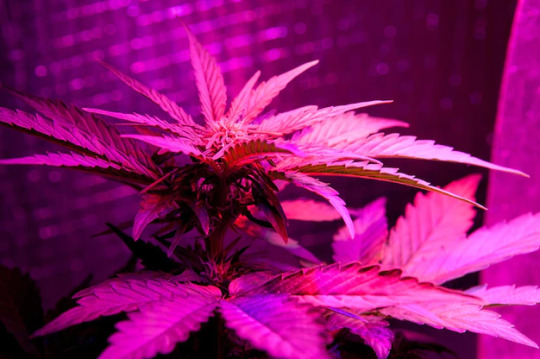
The basic response is: it's not exactly about wattage.
Wattage is an estimation of power utilisation, and keeping in mind that it's useful to know how much wattage you develop for light purposes (so you can make a more efficient, energy-saving decision) it doesn't really have anything to do with how much energy your plants need to develop.
Rather than taking a gander at how much wattage a develop light purposes, it's undeniably more essential to comprehend the develop light range, which is estimated in micromoles (µmol). You want somewhere in the range of 180 to 1300 µmol to develop plants with lights, contingent upon how light hungry your plants are. The Cannabaceae group of plants are on the higher end of the range: they need 800 µmol to grow up to 85% of their normal potential, or 1300 µmol to develop to 100 percent of their regular potential. Kitchen spices, mixed greens and other leaves then again just need 180-380 µmol.
You can utilise a Standard metre to decide your develop light's power in ?mol for light range between 400-700 nanometers (nm) - at the end of the day, for any light range that is reasonable for developing plants.
Might you at any point utilise a lot of light to develop inside?
Indeed. Similar to a human sun related burn, your plants can consume or fade in the event that you utilise an excess of light.
More wattage might mean all the more light result, yet it likewise implies more intensity yield, which can prompt consumed plants. On the off chance that your develop light has a result that is higher than 1300 µmol, your plants can go into what's called photoinhibition, when plants begin burning through more effort on disposing of overabundance light instead of developing to their fullest potential. Accordingly, you'll be left with shrivelled, earthy coloured leaves and passing on plants.
A few producers balance this by taking care of their plants with additional supplements and bringing carbon dioxide into their develop spaces. This is an exorbitant method for developing inside. Besides the fact that you present the expenses of CO2 and added supplements, yet a 1300 µmol develop light likewise needs practically twofold how much energy as a 800 µmol develop light. You would likewise require extra cooling frameworks to dispose of additional intensity to forestall your develop room from overheating. By the day's end, you're burning through a large chunk of change just to create 15% more yield!
What lights would it be advisable for me to use to develop inside all things considered?
With a decent light range, you can develop anything utilising a lot of lower wattage, saving you energy and expenses while yielding better, greater plants. Driven develop lights actually aren't broadly perceived among cultivators, however this new innovation is the most ideal way to get more joyful, denser plants. They utilise a lower wattage without forfeiting a quality light range, so you can bring down your Drove lights directly down to the plant overhang, giving them the light they need without loosening up. While outdated Concealed light other options, similar to HPS and CMH innovation, have a lower starting speculation, they should be supplanted oftentimes and require costly central air cooling frameworks. A quality Drove develops light, then again, can endure as long as 10 years - and never requires a cooling fan. The develop lights in Drove Territory's develop light gardens utilise an expansive range of light (counting red, blue, white and green lights, not just red and blue or purple lights) to assist you with developing the densest, greenest and best restorative plants. Our wide range light motor covers 420-660nm, permitting you to develop inside utilising just 25 watts.
Driven Develop Lights - What is a Watt?
A watt is a unit of measure that depicts the power utilised by an electrical circuit. By and large, buyers have involved watts as a method for estimating how much light is created by a light. A 100 watt light is a lot more brilliant than a 60 watt light and two unique brands of 100 watt glowing bulbs have about a similar splendour, since they utilise for the most part a similar innovation.
On the off chance that watts are a sign of brilliance, we ought to have the option to involve it as an approach to contrasting various kinds of Driven develop lights and a few producers concur. They will attempt to sell you on the watts. Brand "A" at 20 watts is superior to mark "B" at just 15 watts.
Tragically, it doesn't work that way for Drove. A 100 watt light could really have less helpful light for plants than a 50 watt light. Here are a few motivations behind why.
Sorts of Plant Develop Lights
Driven and bright light bulbs both produce full-range light that plants need to develop. There are many plant light packs available that incorporate Drove or bright light bulbs, however a Drove framework ($46, The Home Station) offers a few benefits that pursue the better decision. First of all, in spite of the fact that Drove bulbs cost more than fluorescents at buy time, they utilise a portion of the power fluorescents require and last quite a bit longer than the typical bright light bulb. They additionally emit less intensity and without mercury Drove tubes don't break like glass fluorescent cylinders, prompting less wellbeing dangers.
Best Lights for Developing Seedlings
Recently arose seedlings and youthful plants develop well with the guidance of full-range light, which has both blue and red frequencies. Extraordinary Drives and fluorescent "develop lights" will work, however so will more affordable fluorescent cylinder bulbs. Be certain the light source is inside 6 creeps of the plant foliage for the best outcomes. For simple development, suspend the installation on chains or raise your plants on a table or this Do-It-Yourself seed beginning station. To keep your lights working proficiently, delicately wipe down the light cylinders to eliminate residue and grime prior to utilising them every year.
Best Light for Blooming Plants
Red light waves are fundamental for prodding plants to bloom and developing natural products inside. Look for Drove bulbs and apparatuses that are explicitly intended for developing plants. They're typically named "develop lights" since they're made to create countless red light waves.
A few electric brands produce plant-accommodating Drove bulbs called "high-yield LEDs." High-yield LEDs are for the most part two times as brilliant as standard Drove develop lights. These super brilliant lights are great for developing plants that are local to radiant, dry environments like desert flora, citrus, rosemary, and geranium. Plan to light blooming and fruiting plants for 16 to 18 hours every day. Place the light source 12 inches or so away from the foliage.
The amount Light you Want?
Whenever you've concluded which sort of plant develops light you need, now is the ideal time to conclude how huge a bulb you really want for the space you have. To begin with, decide how much space you want to enlighten. As a guideline, go for the gold 40 watts for each square foot. Partition the wattage of your bulb by 20, (for example, 400 watts separated by 20 = 20), and afterward partition the wattage of your bulb by 40 (400 isolated by 40 = 10).
The response provides you with the limits of your light force range. With one 400-watt framework, you can light somewhere in the range of 10 and 20 square feet of the inside scene. Additionally, make certain to coordinate the wattage of your bulbs with what your installation is intended to deal with. For instance, that 400-watt bulb should not be utilized in a 250-watt framework. Change your arrangement as you see how well your plants develop. Increment or diminish the power of the light by moving the situation of your plants or light installation, so the plants are nearer or farther from the light source.
0 notes
Text
How Far Should a 600w LED Grow Light be From Plants?
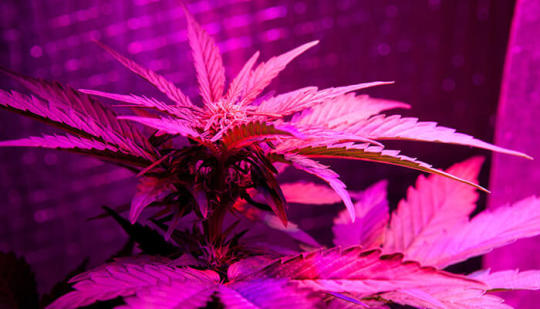
Utilizing LED grow lights for plants is smart if you have any desire to grow your plants indoors. By and large, you don't have the opportunity or even space to grow plants outside. To this end, growing them indoors can be smart. The right light is the foundation of fruitful indoor plant growth. It's not just about what sort of light to utilize, but also where to put it.
It is essential to comprehend that there is no general rule for how far to put LED lights from plants in each period of growth. Various manufacturers build their LED lights in various ways. You need to think about many variables prior to pursuing a choice. Most remarkably, you should decide what your hanging level will mean for your LED grow light's intensity.
It's a good idea to use it between 12 and 30 inches from the plant's highest point. What you need to remember is that as your plants grow, this framework will require some change. Because your plant's light requirements change as it grows, you can't always offer the same amount.
How to Measure Lights for Plants
Before we get everything rolling, it's critical to have a fundamental understanding of how to measure the light that arrives at your plants. These are the vitally important terms you'll run into:
PAR (Photosynthetically Active Radiation) - PAR isn't a measurement; it's essentially a descriptor for the sort of light expected to help photosynthesis in plants. In particular, PAR alludes to apparent light with frequencies of 400–700 nanometers (nm).
PPFD (Photosynthetic Photon Flux Density) - PPFD measures how much PAR is contained in and consumed by your plants. Various areas on each canopy can have different PAR readings.
PPF (Photosynthetic Photo Flux) - PPF is the absolute output of photons in the PAR range from the light.
Micromoles (μmol) - Micromoles are the unit used to evaluate PPFD and are measured per square meter per second.
How Far Should LED light from Plants
As your plants grow, you may need to adjust the LED grow light level to reflect both the vertical growth of the plants and their changing light intensity requirements. In any case, a lot of growers leave their lights at a set level, preferring to change the intensity to meet the PPFD needs at the canopy level during each phase of growth.
Plant growth can generally be isolated into three unique stages: seedling, vegetative, and flowering. This implies that once sound roots are solidly established, now is the ideal time to expand the intensity and lower the lights.
Seedlings
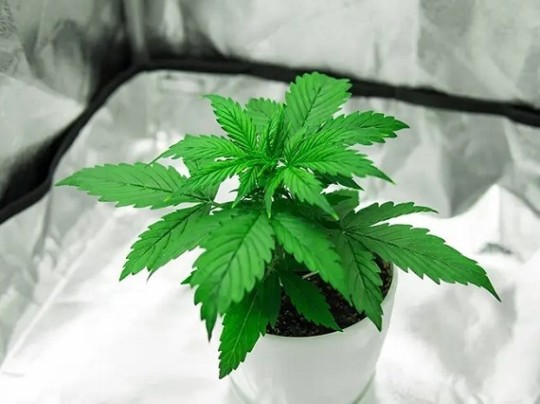
On the off chance that the soil is dry, a seedling won't ever arrive at its maximum capacity, which is the reason your LED lights ought to be higher over the canopy toward the beginning of the growth cycle. Seedlings are delicate and powerless, and while it can sometimes be enticing to expose them to a short eruption of focused energy light to invigorate quick growth, this isn't suggested.
For the most part, 25–35 inches is the best distance to consider at this stage. In any case, when you see your seedlings sprouting, you can decrease the distance between the light and your plant canopy.
Vegetative
At this stage, plants need extremely high-intensity light to perform photosynthesis. Additionally, plants grow faster to become mature, and high intensity and light are fundamental to setting up their food and growing well. Enough light guarantees getting the most potent buds and sound growth with weighty yields.
We suggest keeping your LED grow light distance between 30-36 inches. You should understand that you ought to watch out for the light here. However, plants need heavy lighting, and your mindfulness would abstain from burning light.
Flowering
In this last stage of the life cycle, plants need the highest light intensity levels to proceed with stem growth, blooms, and flowers. So growers need to move their LED lighting systems much nearer to the canopies.
Nonetheless, levels between 18-30 inches are great for the best growth at this stage. Assuming you believe that your plants should achieve incredible height, just increment the level toward the end of the growing cycle.
When Should You Adjust Grow Light’s Distance From Plants?
Like growing marijuana plants, the distance your LED grow light is positioned away from your plants varies depending on the wattage used and room size, so this number should always be measured before installation.
In any case, where lower power consumption can slow your plant's growth, excess heat absorption can be the reason for heat stress and stunted growth in plants.
Ultimately, on the off chance that you see the accompanying signs on your plants, now is the ideal opportunity!
At the point when you start seeing that the leaves are turning yellow, plants are getting an excess of heat. Excessive light burns plants and furthermore affects their photosynthesis process; plants might kick the bucket.
Leaving your lights excessively far from your plants will leave them looking stretched and powerless, and on the off chance that this is not amended, this will prompt variety loss and passing.
Cultivators should observe the leaf construction to conclude whether there is a great deal of light or insufficient light while using LED boards during the vegetative stage.
Ending Note
LED grow lights are turning out to be more well known in view of their many purposes, ranging from assisting individuals with beginning hydroponic setups to giving supplemental lighting to houseplants during low-light conditions or even on whole homesteads where energy proficiency is a huge element.
A definitive objective of any grower is to have plentiful yields and potent buds. LED grow lights really do well at supporting your plant's growth. However, you should be aware and actually take a look at each conceivable boundary. In terms of growing, the intensity of your grow light is probably the most important variable influencing overall plant growth.
#led grow light#grow light distance#led distance chart#600w led grow light#led grow light distance chart
0 notes
Text
Best light for flowering stage
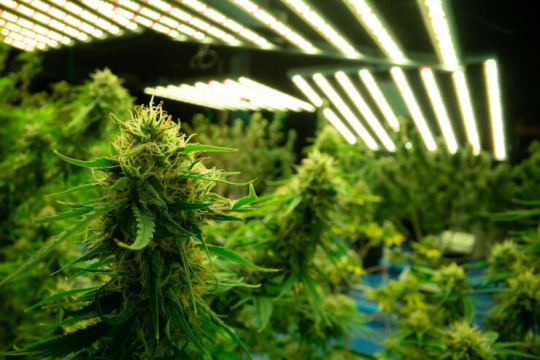
The utilization of Driven develop lights in crop cultivating has as of late seen significant development. Notwithstanding, picking the right light range for plants and knowing what they mean for photosynthesis, can be testing and in many cases confounding.
See all suitable Weed Develop Lights by Profiles
This article means to assist you with understanding the light ranges required for plant development and how full range Drove lighting is currently broadly utilised for crop creation. We'll address what wide range lighting is, the means by which different light ranges influence various phases of plant development, and its impact on Pot creation.
What is Developing the Light Range?
Developing light range alludes to the electromagnetic frequencies of light created by a light source to advance plant development. For photosynthesis, plants utilise light in the Standard (photosynthetic dynamic radiation) area of frequencies (400nm-700nm) estimated in nanometers (nm).
Nanometers are a widespread unit of estimation yet in addition used to gauge range of light - people can identify noticeable light range frequencies (380-740nm). Plants, then again, distinguish frequencies including our apparent light and then some, to incorporate UV and Far Red ranges.
It's essential to note light ranges influence plant development diversely relying upon things like natural circumstances, crop species, and so forth. Commonly, chlorophyll, the particle in plants answerable for changing over light energy into compound energy, assimilates most light in blue and red light ranges for photosynthesis. Both red and blue light are found in the pinnacles of the Standard reach.
Driven Develop Lights
Driven develop lights are energy-productive lights utilised by indoor and nursery ranchers and Marijuana cultivators as well. Utilised as either a sole light source (indoor) or valuable (nurseries), LEDs assist plants with developing utilising full-range lighting at a lower cost than conventional HPS lights.
Numerous cultivators exploit Drove lights to assist with scaling plant creation because of their full light range abilities, low intensity waste and upkeep, and expanded life expectancy. Furthermore, given a plant's physiology and morphology are unequivocally impacted by unambiguous ranges, Drove develop lights can proficiently advance development in crops at explicit times in the development cycle. With the capacity to intently screen quality, energy results can be effortlessly assessed for scaling crop creation.
What is the Ideal Developing Light Range for Plants?
The ideal development of light range for plants relies upon a few elements. These incorporate how explicit plants use Standard range light for photosynthesis yet additionally the frequencies beyond the 400-700 nm territory. This light can assist with speeding up blooming, increment sustenance, accelerate pace of development, and so on. Assuming the light source is sole (inside) or advantageous (nurseries) additional influences which develop light ranges ought to be utilised.
By and large, photosynthetic proficiency happens at the red and blue pinnacles which means plants assimilate these ranges most while developing. You could think the ideal developed light range is equivalent to daylight - all things considered, it's had a huge number of long periods of involvement - in any case, it's more point by point than this.
Daylight delivers a ton of greens, yellows, and oranges - they're the most promptly accessible ranges of light. Truth be told, studies (3) let us know how green light, while not consumed by chlorophyll as well as red and blue (consequently why most plants seem green), it's totally basic for photosynthesis.
Light ranges beyond blue and red frequencies are utilised least by plants to develop as reds and blues are where most photosynthetic movement happens - a central motivation behind why full-range develop lights are unquestionably effective on the grounds that a cultivator can get unmistakable.
What is Expansive Range Lighting?
Expansive range lighting - frequently alluded to as full range lighting, implies the total range of light given by daylight. This implies frequencies of expansive range lighting incorporate the 380nm-740nm territory (which we see as variety) in addition to undetectable frequencies as well, similar to infrared and bright.
One benefit of Driven develop lights is they can be gotten up in a position to produce specific frequencies for determined periods during the day or night. This makes it ideal for plants since cultivators can separate explicit range tones relying upon yields and developing circumstances. Full range lighting can likewise accelerate or slow development rate, upgrade root advancement, further develop sustenance and variety and so on.
Develop Light Range and Marijuana
The develop light range for Pot changes when contrasted with different plants as cultivators are centred around amplifying yields, controlling degrees of THC and other cannabinoid creation, expanding blooming, and to keep up with generally speaking consistency.
Beside apparent varieties, Pot answers particularly well to frequencies right beyond the Standard reach. Consequently, an additional advantage of utilising full range LEDs is the capacity to utilise explicit portions of bright frequencies (100-400 nm), and far-red frequencies (700-850nm) beyond the Standard reach.
For instance, an expansion in far-red (750 nm-780nm) can assist with animating Pot stem development and blossoming - something cultivators need, while essential blue light in negligible sums, can forestall lopsided prolongation of stems and leaf shrinkage.
All in all, what's the ideal development light range for Marijuana? There's no single range since fluctuating light openness advances specific plant morphology during various phases of development. The graph beneath makes sense of the idea of external edge Standard light range use.
Best Lights for Blooming Stage Audits

1. KingLED Lights For Blooming Stage
Ruler Drove has creatively utilised the most current innovation to deliver LM301B LEDs which is multiple times better at giving Standard results. It additionally works on light infiltration and higher energy effectiveness than most lights with 2.8 umol/J.
These lights really increment the reap with the regular light of the full range to help the sprout during the blooming stage. The imaginative KP1000 Drove is very unique in relation to the typical HPS as it utilises super advanced SMD LEDs and reflector innovation to consume under 145 W, as opposed to the standard 400 W HPS/MH.
The upgraded aluminium radiator and a few quiet, rapid fans permit the light to work at low temperatures of 50°F to 60°F. They likewise increment the capability season of the light and keep the plant from consuming.
The light effectively covers an enormous region for the blossoming plants, which is 2.5′ X 2.5′. What's more, the tough nature saves you from changing the light frequently.
Best Elements
Type: Drove
Variety: White
Material: Aluminium
Power: 1000 W
Professionals:
Most current innovations give multiple times better Standard results.
Expansive range of normal light, 12 distinct frequencies of light.
Capabilities in low temperatures.
Keeps the plants from high intensity.
Cons:
After-buy administration from the organisation isn't sufficient.
2. Excellence Lights For Blooming Stage
This 15 W triple-chip (5 watts chip for every Drove) Drove has more brilliant light and effective working than the single chip and twofold chip LEDs. This component empowers the plants to develop rapidly with insignificant power utilisation.
During the blossoming or the sprout stage, the light uses just 80 W power and delivers red light in overflow to create the mid-year feel and improve the sprout. The light can effectively be a substitution for a 1200W HPS/MH, as it consumes simply 235W power.
The extreme wiring can be diminished with the Daisy Chain numerous light advances, which likewise assists with keeping the space coordinated. The electrical plug has double reason as it very well may be connected to a power source or draw power from the adjoining develop light.
The light ought to be run for 12 hours to 14 hours every day during the blooming stage and can cover an area of 4′ X 4′. The draping level of the light ought to be somewhere in the range of 18″ and 24″ for the blossoming stage.
Best Elements
Type: Drove
Variety: B1200W
Material: Metal
Power: 1200 W
Geniuses:
Triple chip Drove.
Daisy Chain plan.
Consumes force of 235 W.
Can cover an area of 4′ X 4′.
Cons:
Guarantee strategy as guaranteed isn't legitimate.
3. Wakyme Lights For Blooming Stage
The Wakyme Drive develop lights include the most recent innovation of SMD 3030 LED, combined with Meanwell power driver. These elements assist them with creating the most Lumen/Standard result and greatest light energy, for example 90% ingestion by the plants.
With the utilisation of just 100 W power, they improve the sprout and yield by half. These lights highlight a diminishing handle that permits you to change the force of the light from 0-100 percent. This is great for business ranch and nursery development.
The extra highlights like dampness resistant quiet fans and aluminium radiators help to create less intensity and forestall the consuming of the plants. It additionally expands the existence of the Drove.
During the blooming stage, the lights can cover an area of 3′ X 3′. The waterproof covering, waterproof Drove board, link defensive sleeve, and waterproof covering guarantee long life.
Best Highlights
Type: Drove
Variety: J-1000W
Material: Aluminium
Power: 1000W
Aces:
Most up to date innovation of SMD 3030 LED.
Most noteworthy Standard/Lumen creation.
Utilisation of just 100 W power.
Movable light force.
Cons:
Awful bundling
4. Vivosun Lights For Blooming Stage
The Vivosun Drove Develop Light elements the unrivalled Samsung LM301 diodes, including more grounded and uniform light with high proficiency of 2.75 umol/J. The low power utilisation of 100 W improves it than most developed lights on the lookout, including Concealed lights.
The Drove likewise includes a diminishing handle which allows you to change the light in 4 levels as per different developing phases of the plant, from the growing stage to the blossoming stage. Likewise, it has a daisy chain with various capabilities, which permits different develop lights to be associated with a solitary power source, consequently keeping away from inordinate links.
These lights produce an expansive range of light that is reasonable for all phases of the manor. For the blossoming stage, the red light with 660nm upgrades the sprout. The ventilation openings and premium-quality intensity sink advance intensity dissemination which forestalls harm or consuming of the plant. As there is no fan highlight, the light creates zero commotion.
The slimmer body configuration makes it reasonable for a gigantic assortment of plants. It is appropriate for 3′ X 3′ region inclusion. Sets of glasses give to safeguard your eyes when in close contact with the lights.
Best Highlights
Type: Drove
Variety: Regular
Material: Aluminium
Power: 1000W
Experts:
4 Customizable light power.
No commotion Usefulness.
Great intensity dissemination.
Slimmer body plan.
Cons:
Utilisation of a typical transformer.
5. Bloomspect Lights For Blooming Stage
This 1000 W Drove Develop Light by Bloomspect gives an expansive range of light which makes it ideal for the full development pattern of the plants. It is appropriate for aqua-farming, indoor plants, business agriculture, nursery, etc.
It has a higher PPFD esteem which improves it for development. It likewise includes a powerful draw of 180W which is higher than most developed lights and gives it a higher Standard result. The few vent outlets, tremendous aluminium sinks, and cooling rapid fan manages the intensity dispersal.
For the blooming stage, the level ought to be around 18″ and region inclusion ought to be 2.5′ X 2.5′. You can likewise expand the region inclusion by changing the level.
Best Highlights
Type: Drove
Variety: White
Material: Metal
Power: 1000W
Stars:
Appropriate for a wide range of plants.
Ideal for the full development pattern of plants.
High PPFD esteem.
High Standard result.
Cons:
Not exceptionally penetrative light.
6. Bug Rancher Lights For Blooming Stage
These SF1000D Drove lights include 301B diodes that give uniform infiltration from the overhang and convey solid light results.
It gives high-energy effectiveness by consuming just 100 W power. It additionally gives a better light entrance as looked at than 200 W Concealed lights. It transmits a full range of light which is reasonable for all phases of plant development.
The enormous aluminium heat sink further develops heat dissemination and no fan implies low commotion capability. The extra elements like water-evidence lights and safeguarded link increment the life expectancy of the lights by half.
For the blooming stage, the region inclusion of the Drove lights is 2′ X 2′. It ought to be turned on for 12 hours during the sprout stage.
Best Highlights
Type: Drove
Variety: Sun-like range
Material: Aluminium
Power: 100W
Professionals:
High energy productivity.
New innovation 301B diodes.
Aluminium heat sink for extraordinary dissemination.
Cons:
Light force can't be changed.
7. Viparspectra Lights For Blooming Stage
Viparspectra P1500 Drove lights include the trendy SMD Drove which emanates high Standard results. It has a superior light infiltration and high productivity for energy.
The extra dimmer handle permits you to change the light power of the Drove which makes it appropriate for all phases of plant development. The 660nm red light is ideal during the blossoming or sprouting stage.
It consumes just 150 W and creates better blossom with low power utilisation. The huge aluminium heat sinks are reasonable for heat dissemination and muffled fanless plan makes them solid and guarantees that it creates low commotion.
The ideal level for the blooming stage is 16″ and the ideal region inclusion for the equivalent is 2.5′ X 2.5′.
Best Highlights
Type: Drove
Variety: Green
Material: Aluminium
Power: 150 W
Aces:
Trendy SMD Drove lights.
Change light force.
660nm red light is best reasonable for the blossoming stage.
Great intensity dispersal.
Cons:
Awful client care.
8. WY CN Lights For Blooming Stage
This Way Can Drove Develop Lights are planned with 100 bits of 10W twofold chip Drove. This has a more prominent Lumen/Standard result which gives the most extreme plant development. It includes a Daisy Chain plan which empowers a few lights to be associated with a similar power source.
While utilising the 110 V AC supply, each light uses 1.6 A. Instead of 1000 W HPS/MH lights, these Drove lights consume around 80W. This light is reasonable for indoor plants, nurseries, development rooms, development tents, etc. It has a low-clamour heat scattering highlight by utilising a disconnected power supply.
For the blooming stage, the ideal level ought to be somewhere in the range of 18″ and 24″ and for 9 hours to 12 hours. The region inclusion for the light is 4.5′ X 5′.
Best Elements
Type: Drove
Variety: Brown
Material: Metal
Power: 1000 W
Stars:
Twofold chip Drove.
Daisy chain plan.
Low power utilisation.
Reasonable for a wide range of plants.
Cons:
It isn't 1000 W as promoted.
9. Serwing Lights For Blooming Stage
This is an expert grade develop light that includes an alternate phantom Prompt to fulfil every one of the plant's longings. The board incorporates 204 red light pieces, 72 blue light pieces and 24 6500K white light pieces, and 4 bits of purple light, orange light and IR each.
The more red light pieces make it positive for the blooming stage. You can modify the lighting with the on and off switches. The SMD Drove delivers no flash and elements with a high variety delivering file, a more drawn out life expectancy and an extensive variety of discretionary variety temperatures. This light is resistant to residue and water-verification under typical use.
During the sprout stage, the prescribed level is 18″ to 24″ and it ought to be turned on for 10 hours to 14 hours. It is appropriate for 3′ X 3′ region inclusion.
Best Highlights
Type: Drove
Variety: White
Material: Aluminum, Acrylonitrile Butadiene Styrene
Power: 1000 W
Aces:
Wide assortment of lights.
Abundant red lights make it appropriate for the blossoming stage.
Dust-verification and water-evidence.
Wide-range discretionary variety temperature.
Cons:
It includes less power than publicised.
10.EnFun Lights For Blooming Stage
The develop light has some control over the lighting to work with and assist the plant with filling in a specific stage. The Drove Develop Lights offer a full range of light for greatest development and acknowledge DC supply. The lights come in two boards which can be changed separately to a sequential situation according to inclination.
The singular driver stabiliser can limit the intensity. The no clamour included without any fans and aluminium plate sink scatters the intensity rapidly. The LM301B diodes have high productivity, critical PF esteem, and more noteworthy light infiltration. It likewise has half less power utilisation. The full range of light upgrades plant development.
For the blooming stage, the prescribed level is 22″ to 26″ and it ought to be on for 12 hours. The region inclusion for the blooming stage is 4′ X 3.5′.
Best Highlights
Type: Drove
Variety: 3000k+5000k+660 nm+ir 750 nm+u-v 400nm
Material: Aluminium
Power: 240 W
Stars:
Comes in two individual light boards.
Advances the full range of light.
High intensity scattering.
Critical PF esteem.
Cons:
A few key pieces are absent.
0 notes
Text
Growing weed with low watt led
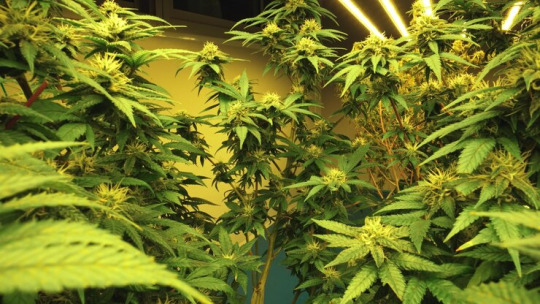
Do you really want 1000W to develop inside? Not with Drove Environments Develop Lights
Many individuals accept that you want a 1000 watt counterfeit light to develop hemp inside. Actually, you can effectively develop therapeutic spices with undeniably less wattage, getting a good deal on your power bill while developing better plants. All in all, how much wattage do you truly have to develop inside?
We should investigate this brief day plants-developing fantasy, and how you can develop inside with eco-accommodating (and wallet-accommodating) Drove develop lights.
Where the fantasy that you want 1000W to develop hemp comes from
The possibility that we really want 1000 watts to develop hemp comes from the days when it was normal to utilise High Tension Sodium (HPS) lights to develop anything inside. At that point, HPS lights were the main fair counterfeit light source available, and a 1000 watt light was fundamental for an adequate photosynthetic light range.
The primary issue with HPS lights (and other extreme focus release/Concealed lights) is that they wind up squandering up to 60% of the energy they consume exclusively on heat yield. All in all, assuming you're utilising a 1000W HPS light to develop inside, just 400W of that energy is being utilised for plant development - the other 600W is being squandered, emptying cash out of your pocket.
Those 400W are likewise giving you a genuinely restricted develop light range, so your plants end up not getting how much legitimate light they need.
How much wattage do you have to develop inside?
The straightforward response is: it's not exactly about wattage.
Wattage is an estimation of power utilisation, and keeping in mind that it's useful to know how much wattage you develop for light purposes (so you can make a more conservative, energy-saving decision) it doesn't really have anything to do with how much energy your plants need to develop.
Rather than taking a gander at how much wattage a develop light purposes, it's undeniably more critical to comprehend the develop light range, which is estimated in micromoles (µmol). You want somewhere in the range of 180 to 1300 µmol to develop plants with lights, contingent upon how light hungry your plants are. The Cannabaceae group of plants are on the higher end of the range: they need 800 µmol to grow up to 85% of their normal potential, or 1300 µmol to develop to 100 percent of their regular potential. Kitchen spices, mixed greens and other leaves then again just need 180-380 µmol.
You can utilise a Standard metre to decide your develop light's power in ?mol for light range between 400-700 nanometers (nm) - at the end of the day, for any light range that is reasonable for developing plants.
Could you at any point utilize a lot of light to develop inside?
Indeed. Similar to a human burn from the sun, your plants can consume or blanch on the off chance that you utilise a lot of light.
More wattage might mean all the more light result, yet it additionally implies more intensity yield, which can prompt consumed plants. In the event that your develop light has a result that is higher than 1300 µmol, your plants can go into what's called photoinhibition, when plants begin burning through more effort on disposing of overabundance light as opposed to developing to their fullest potential. Therefore, you'll be left with shrivelled, earthy coloured leaves and passing on plants.
A few producers neutralise this by taking care of their plants with additional supplements and bringing carbon dioxide into their develop spaces. This is an expensive method for developing inside. Besides the fact that you present the expenses of CO2 and added supplements, yet a 1300 µmol develop light likewise needs practically twofold how much energy as a 800 µmol develop light. You would likewise require extra cooling frameworks to dispose of additional intensity to forestall your develop room from overheating. By the day's end, you're burning through a large chunk of change just to create 15% more yield!
What lights would it be advisable for me to use to develop inside all things considered?
With a decent light range, you can develop anything utilising a lot of lower wattage, saving you energy and expenses while yielding better, greater plants. Driven development lights actually aren't broadly perceived among producers, however this new innovation is the most effective way to get more joyful, denser plants. They utilise a lower wattage without forfeiting a quality light range, so you can bring down your Drove lights directly down to the plant shade, giving them the light they need without loosening up. While old fashioned Concealed light other options, similar to HPS and CMH innovation, have a lower starting speculation, they should be supplanted oftentimes and require costly central air cooling frameworks. A quality Drove develops light, then again, can endure as long as 10 years - and never requires a cooling fan. The develop lights in Drove Living spaces develop light gardens utilise a wide range of light (counting red, blue, white and green lights, not just red and blue or purple lights) to assist you with developing the densest, greenest and best restorative plants. Our expansive range light motor covers 420-660nm, permitting you to develop inside utilising just 25 watts.
Now is the ideal time to stay aware of the times
Proceeding to utilise 1000 watt Concealed lights to develop weed will just cost you cash on immense energy bills and consistently expanding cooling and plant supplement costs. To develop pot in a manner that is simple and energy effective, now is the right time to do the change to low wattage Drove develop lights.
On the off chance that we can offer one recommendation, it's this: disregard the number of watts you need to develop weed. All things being equal, put resources into Drove develop lights with a quality, wide light range, even and high Standard inclusion, and powerful ?mol result and you'll see more joyful, better plants quickly.
Try not to simply trust us. Join the discussion and see what Drove Living spaces develop light grounds-keeper clients are saying on Instagram and Twitter
The most minimal wattage to develop from seed through blossom?
For practically all lights, particularly the customary Concealed lights, you want around 50 watts for each square foot.
For LEDs, T5s and CFL glaring lights you can utilise somewhat less. generally on the grounds that you can have the light significantly nearer as they are not so hot as Stowed away (and vicinity to the light source dramatically increments power because of the backwards square regulation/property of electromagnetic radiation, this incorporates light and intensity), thus you can pull off about perhaps 40-45 watts for each square foot with these lights. With a great Drove, one that is explicitly made for plants, you can perhaps pull off probably as low as 30-35 watts for every square foot.
What Are Watts?
Wattage is a proportion of the electrical power to develop light purposes.
While discussing wattage, there are two key estimations:
1. How much power the light consumes (which influences your electrical bill)
2. How much power the light results (which means that its power).
Higher Wattage = More Weed
By and large, higher the wattage of the develop light you use, the more weed your plant will create.
For instance, In the event that you're growing a solitary plant, a 1000-watt develop light will deliver a bigger yield than a 300w-watt light.
In any case, how would you know the specific wattage of light you require?
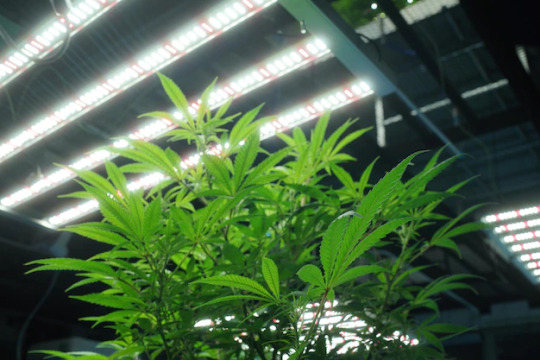
Instructions to Work out The Wattage Of Light You Require
The wattage of light that you expect for developing weed relies upon two things:
1. The number of plants you are developing Every marijuana plant expects something like 1 square foot of room to fill in. This permits the plant space to develop to its maximum capacity without being blocked by the plants around it.
2. The size of your develop space - For Drove and Stowed away develop lights, the base suggested wattage per square ft of room is 50w. It leaps to 150w for glaring lights.
Thusly, to work out the wattage you require, you want to compute the square foot of your develop space and increase it by 50 ( the base suggested wattage per 1sq ft of develop space )
Model: My development space is 2ft long and 3ft wide. Duplicating the length and width gives me 6 ( the square feet of my develop space ) . I would then duplicate this number by 50w to get 300w. In this way, the base wattage I expect for my development space is 300w.
The accompanying table shows how the wattage required increments with the size of your develop space.
You'll likewise need to observe what kind of bulb you're utilising on the grounds that CFL bulbs for developing weed will be marginally unique. In spite of the fact that wattage is a significant thought while developing weed, there is another estimation you ought to comprehend prior to picking your develop light…
0 notes
Text
LED Grow Light Distance Chart- How Far Should Hang the Grow Light
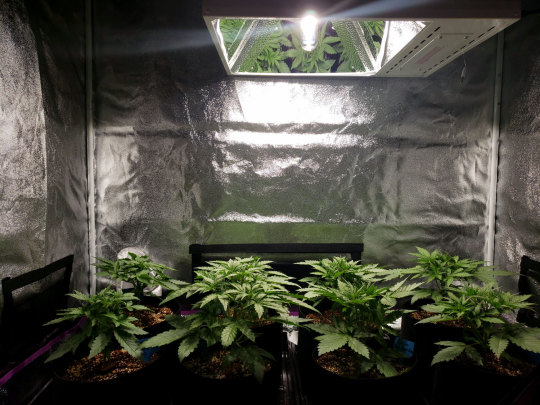
Growing cannabis plants indoors is another revolution. The nations that have made marijuana legal see a remarkable expansion in the number of indoor cannabis growers. Thus there is an expansion in utilizing of LED grow lights.
With regards to growing indoor plants, an ever increasing number of individuals are picking LED lighting over customary choices like fluorescent or HID lighting. LEDs emanate less intensity than HID sources, and that implies that the nearness of LED grow lights to the overhang shifts from that of customary grow lights.
The right light is the underpinning of effective indoor plant growth. It's not just about what sort of light to utilize, however where to put it. Getting the situation of your grow light right is really significant for conveying the perfect proportion of light to your indoor garden, and having cheerful indoor plants.
Contingent upon the sort of light, and the plant you're growing, proper distances from plant to light can go from just 2 inches, up to 2 feet or more.
In this article, we will explicitly be shutting a detailed gander at how far LED grow lights ought to be from plants to give them the most ideal growth without hurting them. We will likewise give you a far reaching distance chart that will assist you with understanding which growth stage requires what sort of lighting.
How to Measure LED Grow Light Intensity
Before we get everything rolling, it's critical to have a fundamental understanding of how to measure the light that arrives at your plants. All in all, how would you measure your plant's light intensity? There are the accompanying ways of estimating whether the heat coming from the light is great or extreme:
PAR and PPFD Method
This is an exceptionally viable method for estimating your grow light's intensity. Yet, for this, let me momentarily inform you concerning PAR and PPFD.
Photosynthetic Active Radiation (PAR): PAR isn't a measurement; it's basically a descriptor for the kind of light expected to help photosynthesis in plants. In particular, PAR alludes to apparent light with wavelengths of 400–700 nanometers (nm).
Photosynthetic Photon Flux Density (PPFD): PPFD measures how much PAR is emitted and consumed by your plants. Various areas on each canopy can have different PAR readings. As a result, the answer to the question "how close should grow lights be to plants?" can vary.
PPFD is a critical measure of realizing how much light is enough at every growth level of the plant canopy.
LED Grow Light Distance Calculator
There is a LED grow light distance calculator you will see on a large portion of the LED grow light makers' websites. It is clear how to utilize it. Utilizing it, you will rapidly know the specific distance to hang your light from your indoor plants. You can prevent your foliage from consuming in this manner.
In general, you can calculate the light distance by following these means:
Figure out the distance between your plant's canopy, first and foremost, and your LED grow light. This is the X you will use in the grow light distance formula. Then, find the distance between the plant top that is closest to the hood and the LED panel. This is the distance at which you ought to put your lights. The measurement you will find is in inches or centimeters.
If you use an LED panel with two bulbs, divide the total you obtained previously by two.
Hand Method
This is a simple and essential method: place the upper side of your hand directly under the light. Assuming it feels endurable in your hand, plants grow under the light and get huge light levels.
On the other hand, in the event that you can't bear the heat emerging from the LED grow light, now is the right time to keep your plants farther away.
LED Grow Light Distance Chart
However, unlike other types of grow lights, such as regular LED lights, it may be difficult to determine how far your LED grow lights should be from your plants.
Here is a LED grow light distance chart zeroing in on the different wattages of LED grow lights:

Seedling Stage:
Youthful seedlings don't require intense light. Furthermore, here, numerous growers commit errors by keeping their LED grow lights close and intense to advance quicker growth. The delicate and fragile seedlings get unfavorable impacts and subsequently either pass on or don't grow true to form.
Hence, I prescribe that you use a delicate methodology for your plants at the seedling stage, as they need less energy. Generally, the best distance to consider at this stage is 24-35 inches.
Nonetheless, when you see your seedlings growing, you can reduce the distance between the light and the plant canopy.
Cloning Stage:
Cloning is a favorite practice of numerous cannabis growers. However, it's anything but a standard phase of a plant's growth cycle, yet it's fundamental. In this stage, growers use cuttings and clasps from the developed plants to grow new plants in their indoor garden.
Clones need exceptionally intense light to reach the next vegetative state. It is inverse to the seedling phase. Growing cannabis through cloning requires hanging your light somewhere near 14–36 inches over the plant canopy.
Vegetative Stage:
On the off chance that you have been growing indoor plants for a long time, you should know about the significance of the vegetative phase in the plant's life cycle. At this stage, plants need exceptionally high-intensity light to perform photosynthesis.
Additionally, plants grow quicker to become adults, and high intensity and light are fundamental to setting up their food and growing well. Enough light guarantees getting the most potent buds and sound growth with weighty yields.
We suggest keeping your LED grow light distance between 12-24 inches.
In any case, you should comprehend that you ought to watch out for the light here. Plants, on the other hand, require a lot of light, which your mindfulness would keep you away from.
Flowering Stage:
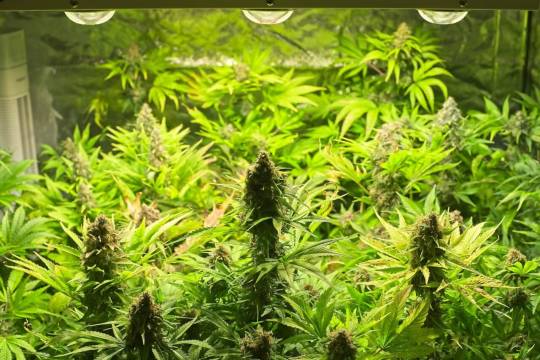
The last phase of the growth cycle is the flowering stage. Flowering plants will generally make buds and reach maturity at this stage through stem development.
For taller plants, you ought to expand the level of the lighting setup. However, ensure that you continuously and gradually increment the distance by intently observing the advancement.
On the off chance that you believe your plants should accomplish an incredible height, just increment the level at the end of the growing cycle. Some growers prefer to keep their plants short, so they do not need to increase the level. Nonetheless, the level between 16-36 inches is great for the best growth at this stage.
Final Thoughts
LED grow lights are turning out to be increasingly popular due to their many purposes, ranging from assisting individuals with beginning hydroponic setups to giving supplemental lighting to houseplants during low-light circumstances or even on whole farms where energy effectiveness is a critical element.
A definitive objective of any grower is to have plentiful yields and potent buds. LED grow lights, in general, are effective at promoting plant growth. However, you should be aware and actually take a look at each conceivable boundary. In terms of growing, the intensity of your grow light is possibly the most important variable influencing overall plant growth.
Estimates can be made using a measuring tape or ruler and a LED grow light distance chart. If you intend to grow indoor plants, this information will be useful.
0 notes
Text
What are red and blue LED grow lights?
The growth of plants is inseparable from the light and heat provided by the sun. Different light color, light intensity, and light time have different effects on plant growth. Sunlight is composed of countless continuous light of different wavelengths. In these spectrums, A large amount of radiant light has no effect on plant growth, and the effect accounts for only 5% of the spectrum. Through research, it was found that in all spectrums, red and blue light can promote photosynthesis in plants and promote plant growth. Artificially developed with a specific spectrum The light source can supplement specific light when the light is insufficient. Red and blue LED plant lights are widely used in indoor cultivation and greenhouse cultivation. The wide use of red and blue LEDs saves electricity consumption and reduces electricity bills. The best red and blue LED.
The light absorption process of plants occurs in the chloroplast. Chlorophyll is the main body of plants for photosynthesis. Plants do not use all components of sunlight for photosynthesis. In the red region with a wavelength of 640-660nm, chlorophyll a has a strong absorption peak: Chlorophyll b has a strong absorption peak in the blue part of 430-450nm. The red spectrum is the energy source of photosynthesis, and red light promotes the growth of plant stems. Blue light can promote the opening of stomata and help external carbon dioxide enter human cells, thereby improving the Its photosynthesis rate. Blue light promotes the growth of plant leaves. In addition to the intensity of artificial light, the effect of artificial light also depends on the physiological radiation characteristics of the light source radiation spectrum that can be effectively absorbed by plant leaves for photosynthesis. Different supplementary light sources have different physiological characteristics Radiation characteristics. In the visible spectrum of the light source, from 400 to 760 nanometers, the light energy absorbed by plants accounts for about 60% to 65% of the physiological radiation light energy. Among them, it is mainly red light radiation with a wavelength of 600 to 700 nanometers , the light energy absorbed by the plant accounts for about 55% of the physiological radiation light energy. The photosynthesis of red light is the strongest, and supplementing the light with a light source rich in red light will make the plant bloom earlier, promote the accumulation of plant dry matter, and promote the bulb The formation of , tubers, leaf bulbs, and other plant organs. Second, it is blue light radiation with a wavelength of 400-520nm, and the absorbed light energy accounts for about 8% of the physiological radiation light energy. Supplement artificial light with a blue-rich light source , which can delay flowering and make plants for the purpose of obtaining vegetative organs to grow fully. Proper ratio of red light (600-700nm) to blue light (400-520nm) photon flux, namely R/B ratio, can ensure healthy planting plant.
The spectrum of red and blue fill light consists of red light and blue light, and the full spectrum fill light, as the name suggests, its spectrum is the spectrum that simulates sunlight, similar to sunlight. When using, most people choose to use red and blue light, red light The blue light utilization rate is high, the fill light effect is also obvious, and the power consumption is also very low. It can play a good fill light effect on the growth of plants, but this kind of light is harmful to the human body. The red and blue fill light emits pink light. If people are in this state for a long time, they can feel nauseous and dizzy because of the light color.
Full-spectrum plant fill light will not produce this situation. Because its light is close to natural light, people will not feel physical discomfort even in this environment for a long time. But we must also know that because full-spectrum plant fill light is to imitate the sun Light, there will be a lot of light, the plant utilization rate is low, so there will be some waste, and the power consumption will be relatively high.
Customizing the proportion of light is a key step in plant lights, and the following steps also need to be controlled. People adjust the growth of plants by controlling air conditions. Air control includes control of light time, light intensity, and light density. Control. Appropriate Increasing the light time of plants can accelerate plant growth and improve crop yield. The light intensity must be greater than the plant's supplementary light point and less than or equal to the plant's light saturation point, and the plant can grow healthily. The closer the light intensity is to the light saturation point, the better the plant grows. faster.
Red light and blue light have different effects on plants. Before configuring the ratio of red and blue lamp beads for plant lights, it is necessary to understand the situation of crops and understand people's needs for crop growth. For example, lettuce is a vegetable. What people want is Stems and leaves that can be used as food. Promoting the rapid and healthy growth of its stems and leaves is our concern for plants. The ratio of red and blue LED grow lights to red and blue light beads is the best blue light beads; for strawberry planting, we want strawberries Fruit. We want the strawberry fruit to be big and big. When matching with a plant light, increase the proportion of red light appropriately. Red light can promote the growth of plant fruits; for flower planting, our goal is to bloom more and have a longer flowering period. The ratio of safflower to blue light should be appropriate. Red light can promote plant flowering, and blue light can inhibit plant fruit. The ratio of red and blue lamp beads for LED grow lights is roughly between red: blue = 6-9:1. According to different According to the needs and uses of plants, choose different proportions of lamp beads. Sometimes a small amount of green lamp beads are mixed into the LED plant light, and its main function is to adjust the comfort of the light and protect the naked eye.
0 notes
Text
What Are PAR Values?
Plants use a specific light range known as Photosynthetically Active Radiation (PAR) for photosynthesis. The PAR values involve the electromagnetic wavelengths between 400 and 700 nanometers on which different stages of plant growth occur. Grow LED lights produce a ton of lights of different wavelengths but are not absorbed by plants. Plants only absorbed lights of some specific wavelengths, and they reflect rest. So, in simple words, PAR is the light’s amount that is usable to plants.
The effectivity of any Grow LED light depends upon its PAR value. It is measured by the number of micromoles of light per square meter per second. The more intense the PAR value of the LED light, the more effective it will be. So, always check the PAR value of grow light while opting for the right one for your indoor garden.
600–1000 µmol/m²/s: High-strength light. This range is best for developing growth and flowering.
400–600 µmol/m²/s: Medium strength light. Suitable for early veg and stretching.
200–400 µmol/m²/s: Low strength light. Ideal for delicate seedlings and clones.
ECO Farm Z6-600 Samsung LM301B LED Grow Light With Separately UV+IR Control

Removable and Replacable Lightbars ,dimmer Control on every driver ;
IR is independently controlled,UV is independently controlled;
Samsung LM301B Full Spectrum White Light Diodes, 660nm Red Diodes, IR+UV Diodes on independent controls.Each LightBar is Made up of 272 pcs leds: Totaling 1,632 diodes per light ;
ECO Farm ECOD Samsung UV+ IR 640W Dimmable LED Grow Light
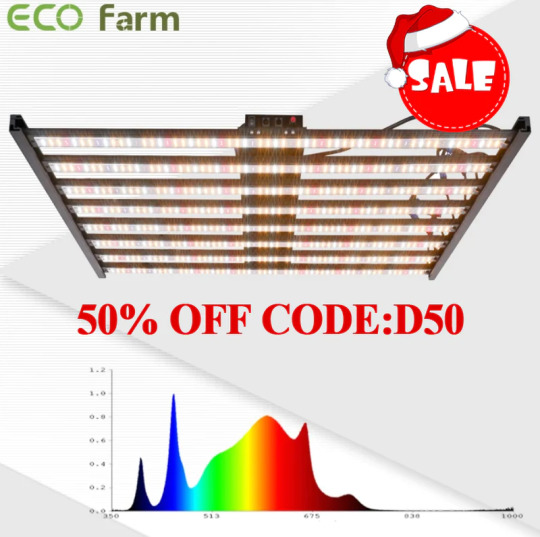
The ECO Farm Samsung LED grow light features a balanced spectrum for superior growing power with best possible LED diodes available.
This fixture provides you with total control over everything. With onboard dimming function, growers can set the ideal intensity at any stage of plant growth for optimal photosynthesis activation.
If you are interested in the led grow lights, welcome to visit our official website: growpackage.com
Buy now has a discount, you can take this led grow light home at a better price.
0 notes
Text
me: i should go back and check Batman & the Signal for reference on how Duke’s light powers work
Duke’s light powers:

[ID: Two comic book panels with the first being a closeup of Duke’s eye with circles of light going up and down the panel with Duke’s internal monologue being “What do you see, Duke?”. The next shows a blue man in an orange jumpsuit with a hand coming down from his bleeding nose. There are red targets on him and light effects surrounding him. Guy: “You’re not on the dial.” Duke (internally): “Light signals.” End ID]
Batman & the Signal #1
So Duke can see light signals which is a pretty broad term. While shrimp colors might not be a thing, he’s seeing what I think is supposed to be ultraviolet light in this scene which have a higher frequency than visible light. I wonder how far this goes and if it goes in the other direction as well... like
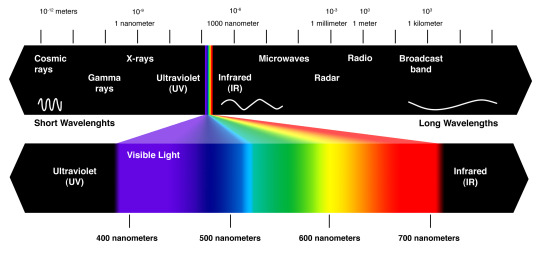
[ID: A diagram of the visible light spectrum, which has 10^-12 meters on the left to 10^3 meters on the right. From left to right are cosmic rays, gamma rays, x-rays, ultraviolet (UV), visible light, infrared (IR), microwaves, radar, radio, and broadcast band. Visible light is a small sliver in the diagram but is drawn out beneath it as a rainbow with violet at around 400 nanometers, blue around 500 nanometers, yellow at 600 nanometers, and red at 700 nanometers. End ID]
39 notes
·
View notes
Photo

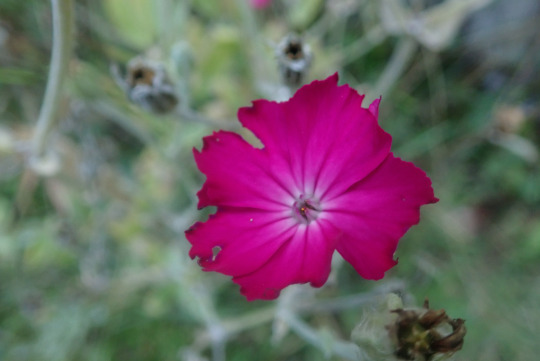
01/10/2020 The Photoshop Artifacts On A Stick are blooming! I did not adjust the colours of these photos; they're just Like That.
Red is at one end of the visible spectrum at 700 nanometers and purple is at the other at 400 nanometers, with the wavelengths of every other visible colour in between them. There's no reddish-purple wavelength of light, and there's no magenta stripe on the rainbow. Do not trust this flower. Do not trust its nonexistent colour.
161 notes
·
View notes
Note
Hello! This is a free pass to answer this with whatever you want! Infodump, vent, tell a funny joke, post a pretty picture - whatever you’d like. (Feel free to pass this on, but no pressure!)
Hi nonnie! Thank you so much for this ask! It's been sitting in my inbox for a while because I was finishing up a research project related to nanoplasmonics and light-matter interactions, and I wanted to talk about something I thought was really cool that I had to cut out of my report.
SO. The Lycurgus Cup. 4th century cup made of something called dichroic glass. Looks like this:
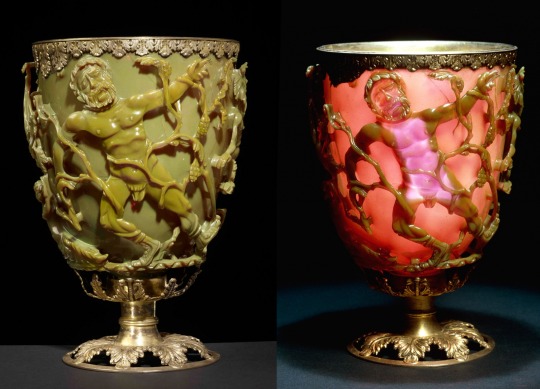
Yes that's the same cup. No there are no LEDs in there.
So basically, light is weird. Light-matter interactions are even weirder. Any time light hits an object, a ton of things happen. Light is reflected back from, absorbed by, or transmitted through the object. This is totally dependent on the wavelength of the light and the optical properties of the material.
(For example, gold is That color because it tends to reflect back the yellow-orange-red end of the visible spectrum and absorb the other wavelengths. Silver’s absorption peak is outside the range of the visible spectrum, which means it reflects back just about all visible colors. That’s why it looks shiny greyish-white.)
Ok so we know light is weird. What’s even weirder is HOW metals reflect light back. Y’know how metals are super shiny? Well that’s because the electrons on the surface of the metal actually form into the shape of the light wave hitting them. Essentially it goes like this: light hits the surface, the energy from the light energizes the electrons, the electrons form into a matching wave, and emit light back that almost perfectly matches the incident light.

(The waves of electrons on the surface of a metal are called surface plasmons, and if anyone is interested in learning more, this video does a great job of explaining what’s happening.)
Ok so how is this related to the cup?
Well, turns out when you take the metal that’s getting light shined on it and make it really really REALLY small- and I’m talking like 1/10,000th the width of a human hair- things get EVEN weirder.
In the nanoscale, the metal particles are actually smaller than the wavelength of visible light! Wavelengths of visible light range from 400 to 700 nanometers, while these nanoparticles can range from 10 to 100 nanometers in size.
So suddenly, the plasmons on the surface of the metal can’t make a matching wave, because the metal they belong to is only a fraction of the size of that wave! The result is a shift in the color, or reflectance peak, that correlates directly to the size (and shape) of the nanoparticles:
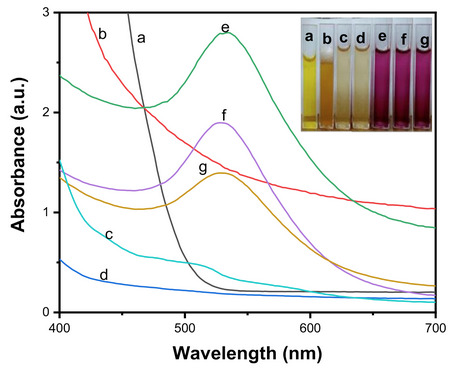
(Source here. Note that each sample is a solution of gold particles suspended in either salt or alcohol, I’ve forgotten the specifics. Samples e, f, and g are nano-sized gold particles.)
And back to the cup. Finally.
Basically, when the glass for this cup was made, a certain amount of tiny silver and gold particles were added. These particles reflect light as you would expect- that is, if the light source is placed in front of the glass, the metal particles reflect the green wavelengths back to the eye.
However, when the light source is behind the glass, the light must travel through the array of nanoparticles suspended in the glass before reaching the eye. We don’t see reflected light, we see transmitted light. The fine particles scatter blue light very well, but not red. Red light moves straight through the glass and to the eye.
And that’s why the Lycurgus Cup looks greenish in standard lighting, but red when backlit. Because the Romans accidentally discovered the weird optical behavior of nanoparticles in the 4th century.
#thank you for the ask nonnie#this was fun to write#science#kye answers#yes i did my entire nanomanufacturing project on nanoplasmonics#and yes i WILL infodump more if anyone is curious
3 notes
·
View notes